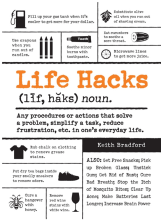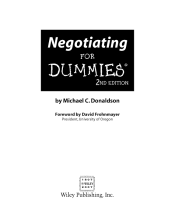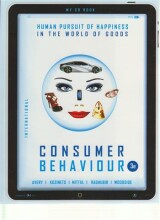Marketing: Products, Pricing, Distribution, Promotion, and Sales
13 important questions on Marketing: Products, Pricing, Distribution, Promotion, and Sales
What are the five key components which make up the marketing process?
- Product and service development
- Pricing
- Distribution
- Promotion
- Sales
Which five factors do you keep in mind as you consider your pricing strategy?
- Your marketing objectives.
- The cost to produce the product or service.
- Customer demand.
- Comparative value to the customer.
- Competition.
How does Apple determine the price?
- Higher grades + faster learning
- Never study anything twice
- 100% sure, 100% understanding
How do you update the prices of existing products or services?
What is direct distribution?
What are the key features of mail-order catalogs?
Initial outlays include the charge for obtaining mailing lists, the costs of creating and developing the catalog, and the mailing expenses. And don't forget the additional cost (and risk) of maintaining sufficient inventory to be able to ship your orders within a reasonable amount of time.
What is indirect distribution?
What are the advantages and disadvantages of relying on wholesalers or distributors?
Many manufacturers like working with wholesalers because they don't want the hassles associated with selling to consumers and smaller customers; after all, their expertise is in manufacturing.
How should I decide which distribution channels are the best suited to my business?
- Your competitors are using: Rank the list with the most succesful business at the top.
- You can afford.
- Your research and intuition tell you will be succesful in your industry five years from now: given the continuing increase in web-based buying, yesterday's distribution channels will look different than today's.
Not compare these three lists, add a pinch of common sense, and determien the distribution channel(s) that you prefer.
Whatever you do, don't lock yourself into one distribution channel forever.
What are the best online opportunities for marketing small-business products and services?
- Facebook: every small business should have a Facebook page, the primary purpose of which should be to build relationships with customers.
- Twitter: you can use Twitter to keep customers alterted to special offers or product additions or modifications.
- Groupon: Groupon is a for-profit, web-based business that negotiates huge discounts - usually 50 to 90 percent off - for its small-business customers. Groupon sends the proposed deals to thousands of subscribers in a daily e-mail and (we hope) sends the business hundreds of new customers.
How do you use the newspapers for advertising?
Newspaper ads have a relatively short life span, don't offer the same quality of reproduction that other print advertising tools do, and are oftentimes quickly scanned (as opposed to read in detail) by readers.
"Nothing happens until a sale is made."
What do the three parties (customer, employee, company) expect from a business relationship?
- Customer expectations: Solutions to problems and promises kept regarding quality, delivery, and pricing.
- Employee expectations: Fair wages, reasonable job security, and courteous treatment.
- Company expectations: Fair profit, good professional reputation, and opportunity for continued growth.
Your job as a small-business owner is to make sure that you and your employees understand how this Business Triangle works and then see to it that the three legs remain balanced. The overriding principle here is that, in the long term anyway, everybody must win.
The question on the page originate from the summary of the following study material:
- A unique study and practice tool
- Never study anything twice again
- Get the grades you hope for
- 100% sure, 100% understanding
































